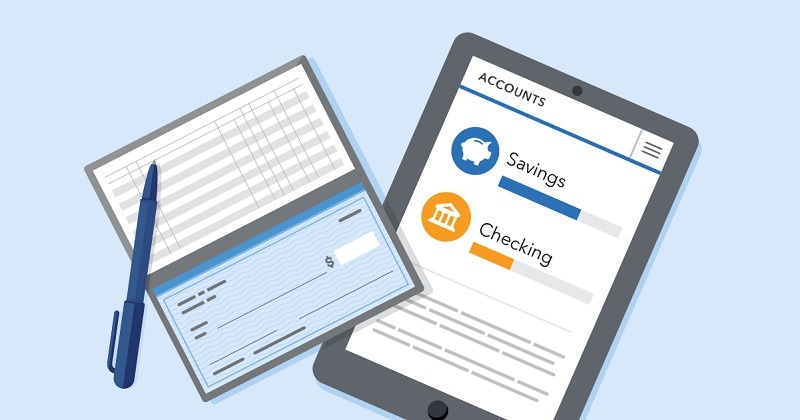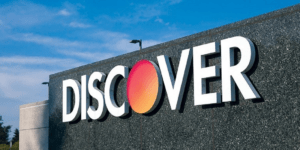
Checking and savings accounts are the most commonly used bank accounts. Both of them hold your money in a secure fashion, but come with a pretty long list of differences. It’s essential to understand these differences in order to choose which account is good for you.
If you want to get a better idea of which account you should use, make sure to read through our post to understand the key differences. If you want to learn more about the banking world, you can always check back at HMB.
Checking vs. Savings
| Checking | Savings | |
| General use | Spending | Saving |
| Withdrawal limits | None | Six per month (excluding in-person and ATM withdrawals) |
| Does it pay interest? | Sometimes, minimal. | Yes, interest may vary. |
| Common fees |
Some checking accounts don’t have all these fees. |
You can find some savings accounts that don’t have these fees. |
| Minimum balance requirements | Varies | Varies |
| Typical Features |
|
|
Checking Accounts Are for Payments
- Checking accounts are where you keep the money you plan to spend. Since most checking accounts don’t pay interest, there’s no reason to store large sums of money in it. There are several ways to pay with a checking account. You can do online payments, in person purchases, and electronic billing.
Savings is for Savings
- It’s important to separate your assets into categories. Not all of your cash should be in the spending category, this is where a savings account comes in. Since ideally you aren’t spending the money in your savings accounts, it will accumulate way more interest than a checking account. However, it’s harder to spend the money in your savings account.
Checking Accounts
A checking account is designed for frequent transactions, and you can use the money in it in a ton of different ways.
- Automatic Electronic Payments: You have consistent bills that you need to pay, you can set up to have your funds automatically deducted from your checking account and used to pay said bills. If you are a forgetful person, this a great way to make payments on time without having to constantly worry about them.
- Debit Card Payments: A debit card allows you to easily use the money in your checking account whenever you want. They feel and are used in the same way as credit cards, but they are simply used to take funds out of your checking.
- ATM Withdrawals: Use your debit card to get cash out of any ATM close to you
- Checks: Checks are a classic way of allowing someone else to draw funds from your checking account.
The majority of checking accounts don’t pay out any interest. However, if you keep a large amount of cash in your checking account, it may be in your best interest to find an interest paying account.
Many local banks have this option, but you’ll have to be careful. There is usually strict criteria that has to be met in order to earn the interest on your checking.
If your main goal is to accumulate interest, then checking accounts are not the way to go. It’s always nice to earn back a little bit of change, but even the checking accounts that do offer interest usually offer an incredibly low amount.
There are two ways to bank without paying monthly charges.
- Find a Free Checking Account: Check with local banks and credit unions, they will often have accounts that have no monthly charges.
- Free Waivers: You can avoid fees by meeting certain criteria that varies bank to bank.
- Overdraft Charges: These are transaction fees that occur when you spend more than you have in your account. The bank may lend you money that will allow you to spend even if you run out of cash. You’ll have to pay them back along with the overdraft charge.
- Maintenance Charges: Flat dollar fee that that will be deducted from your account every month. Try to avoid accounts that have this fee.
- Other: There are always different fees that can stack up. For example you might have to pay a fee for using an ATM. Just make sure you look at the criteria for your bank, as it does vary.
Savings Accounts
Saving accounts are a much better way to store your money and accumulate money than a checking. However, be careful with how much you put in, because you can only withdraw money from a saving accounts 6 times per month. Here are some of the features of a savings account
- Interest: Unlike checking accounts, it is standard for savings accounts to have some interest that comes with them. Although the rate isn’t always super high, it’s still a nice feature and incentive to keep the majority of your money in one place. Savings accounts give less interest than something like a CD, but they also allow you to manage your money much more freely.
- Categorization: Savings accounts will allow you to split your money and put them into the appropriate categories that you are aiming for. Spending goes in checking, and money you set aside for long term use can be put into savings. This will help you to not overspend and get a better look at how your finances are doing.
Managing Your Savings
There are plenty of ways to use the money in your savings when the time comes. Remember, you can only withdraw money from a savings 6 times per month.
- Cash Withdrawals: If your bank gives you an ATM card, you can access your savings from any ATM. You can also go to your bank local branch and request a withdrawal from your savings account.
- Transfer to Checking: You can simply transfer your savings to your checking whenever you need to. If you are within the same bank, then this process is nearly instant. Going from bank to bank usually takes a little bit longer.
- Checks: Banks can print checks that are payable to you. Cash in these checks to easily withdraw cash from your savings. There is no limit to how many times you can cash in a check payable to yourself.
Fees
In general savings accounts are much cheaper than checking. There is usually no cost for the account, but miscellaneous fees such as ATM fees can be a harsh reality. Make sure you check with your bank to get a better understanding of your savings account.
 |
 |
Bottom Line
Keeping your money in a secure bank account is important not only financially but also for peace of mind. When looking at which account you should use, it’s important you understand the pros cons of each one. If you can think of any other differences, let us know in the comments below!
Wondering which bank you should use? For a variety of options, see our list of the Top Bank Promotions and Best Bank Rates.





